Lasers for Holography
The basic principles of holography were discovered in the first half of the 20th century by Nobel Prize winner Dennis Gabor who was awarded the prize 1971 for his ‘invention and development of the holographic method’ [1]. But it was only after the laser was invented in 1960 when optical holography as a recording method and as a technique to display 3D images as an art form took off.
Todays increased availability of more compact and powerful single longitudinal mode (SLM) solid-state lasers with the long coherence length and stable wavelength required to write holograms, along with the development of a new generation of sensitive emulsions and the availability of wavelength selectable LED based illumination sources have opened up new application areas for holographic techniques.
Today’s holographic applications include making security holograms on bank notes or passports, generation of ultra-realistic full-color 3D replicas of objects and production of so-called holographic optical elements (HOE’s) used, for instance, for image projection in virtual reality (VR) and augmented reality (AR) devices.
In many applications, e.g in the security industry, high volume replication of HOEs is typically achieved with embossing techniques. However, for AR/VR glasses the requirements on resolution are much higher and therefore lasers are needed for printing these HOEs.
Developments in laser technology, emulsions and illumination sources have also led to drastic improvements in the white light holography, which has opened up new applications for holography related to ultra-realistic 3D replication of objects. True-color holograms, such as Optoclones™ [2], have become so realistic they are now used to create 3D reproductions of precious artifacts, such as the Fabergé eggs. In situations where the actual artifacts are too fragile or valuable to transport, holograms can bring the experience of viewing these items to a wider audience. These white light holograms are exposed by a combination of 3 to 5 wavelength over several hours. To be able to capture the precious artifacts in their own environment, recent commercially available holographic imaging systems are portable and designed to withstand the stress of frequent transportation.
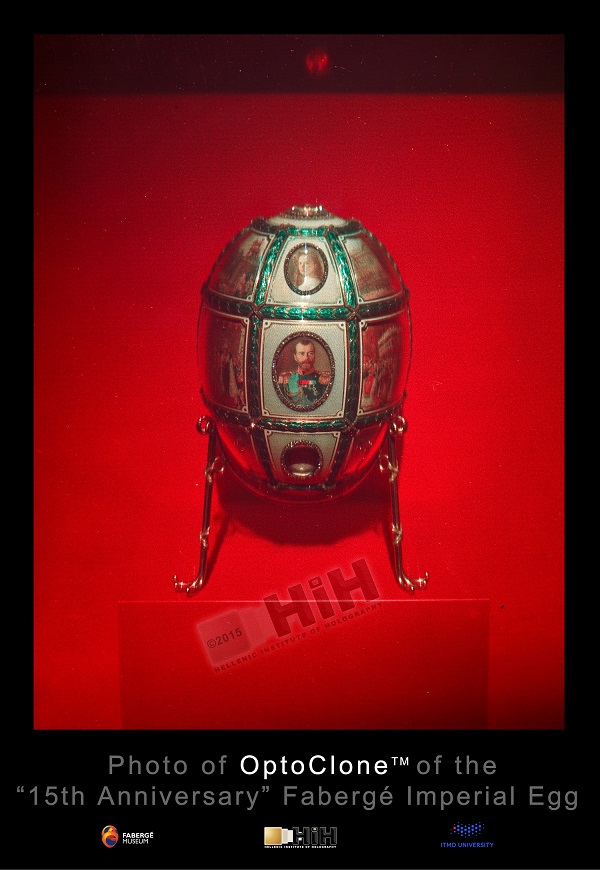
An OptoClone of a Faberge Imperial Egg Courtesy of Hans Bjelkhagen and Hellenic Institue of Holography.
All these holographic and interferometric techniques require single-frequency or single-longitudinal-mode (SLM) lasers in the visible spectrum with long coherence length, excellent wavelength stability and accuracy, as well as high, stable output powers [3]. As the applications of these techniques are transitioning from laboratory settings to production-scale environments the demands on performance reliability and stability over long time periods and variable environmental conditions are increasing.
HÜBNER Photonics’ Cobolt laser portfolio of single longitudinal mode (SLM) diode pumped lasers (DPL) offers a large selection of lasers with wavelengths ranging from the UV to the near-IR. With stable coherence lengths of 100´s meters, perfect TEM00 beams, excellent wavelength stability over a wide range of operating temperatures and proven reliability, these lasers are ideal for demanding holography applications also in industrial settings. In the visible range, a large number of fixed wavelength lines in the blue-green-red region are available (e.g 457 nm, 473 nm, 491 nm, 515 nm, 532 nm, 561 nm, 640 nm, 660 nm) with output powers on the scale of half a watt, giving flexibility to select the most optimal wavelengths depending on the emulsions and illumination source.
In addition, the tunable single-frequency laser C-WAVE offers unique features for holography applications. The enormous flexibility in wavelength selection from the C-WAVE can allow for complete customization of the writing wavelength, making the hologram more difficult to copy and thus extremely attractive for security-based applications. The tunability of the wavelength also allows tailoring of the exposure wavelength to the specific color of the illumination sources (e.g., LEDs), which improves the quality of the hologram or HOE.
[1] “The Nobel Prize in Physics 1971”. Nobelprize.org.
[2] Sarakinor, A., Lembessis, A., “Color Holography for the Documentation and Dissemination of Cultural Heritage : OptoClones™ and Four Museums in Two Countries”, Journal of Imaging (15 June 2019)
[3] Hens, K., Sperlinga, J., Sherliker, B., Waasem, N., Ricks, A., Lewis, J., Elgcrona, G.,” Lasers for holographic applications: important performance parameters and relevant laser technologies,” Proc. SPIE 10944, Practical Holography XXXIII: Displays, Materials, and Applications, 1094408 (1 March 2019)
At HÜBNER Photonics we have a large selection of lasers perfect for holographic applications:
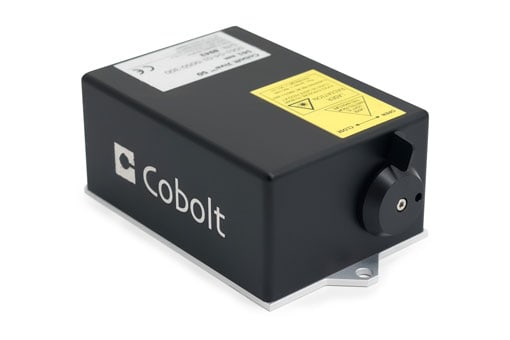
Cobolt 04-01 Series
Single frequency, CW diode pumped lasers
Wavelength: 457 nm – 1064 nm
Power: 25 mW – 400 mW
Applications: Raman, microscopy, LDV, DLS
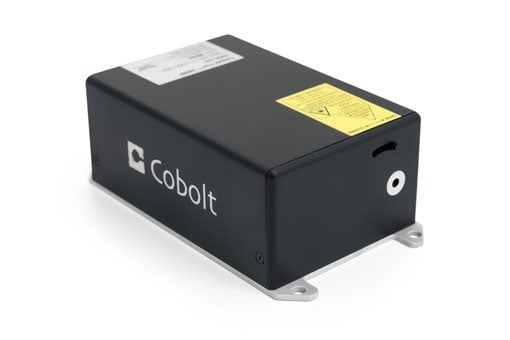
Cobolt 05-01 Series
High power, single frequency, CW diode pumped lasers
Wavelength: 320 nm – 1064 nm
Power: 10 mW – 3000 mW
Applications: Holography, Raman, microscopy, flow cytometry, research
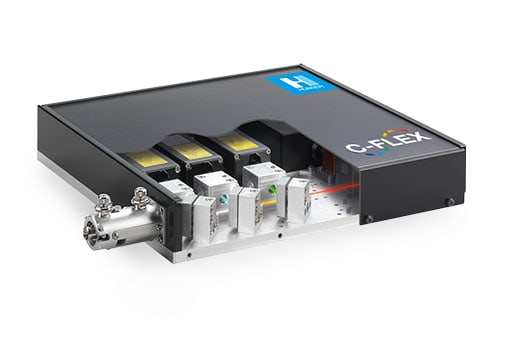
C-FLEX
The compact and flexible laser combiner
Wavelength: 375 nm – 1064 nm
Power: 50 mW – 1000 mW
Applications: Microscopy, Raman, holography
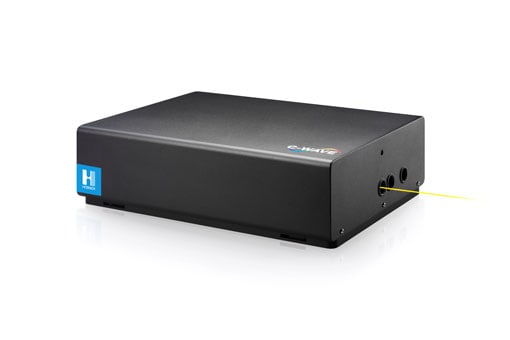
C-WAVE Series
Widely tunable continuous-wave lasers
Wavelength: 450 nm – 1900 nm
Power: 200 mW – 1000 mW
Applications: Nanophotonics, quantum research, Raman (TERS)

